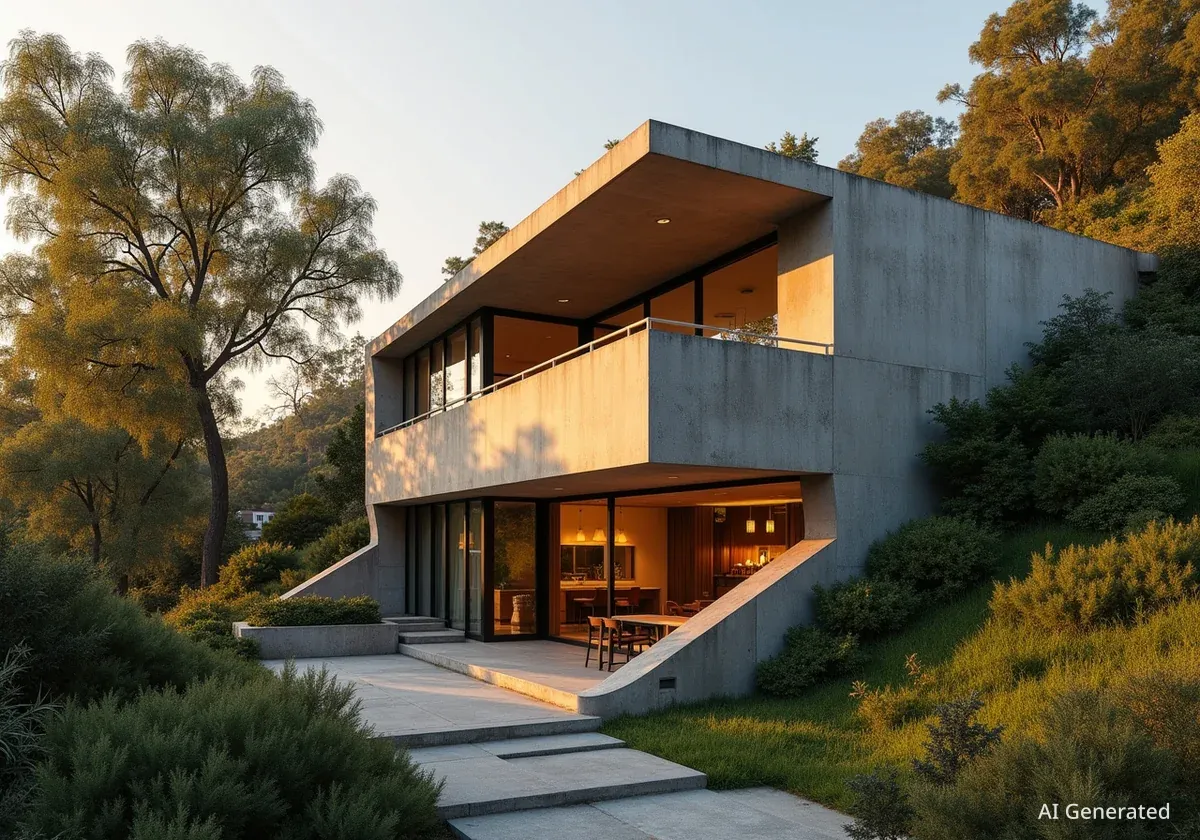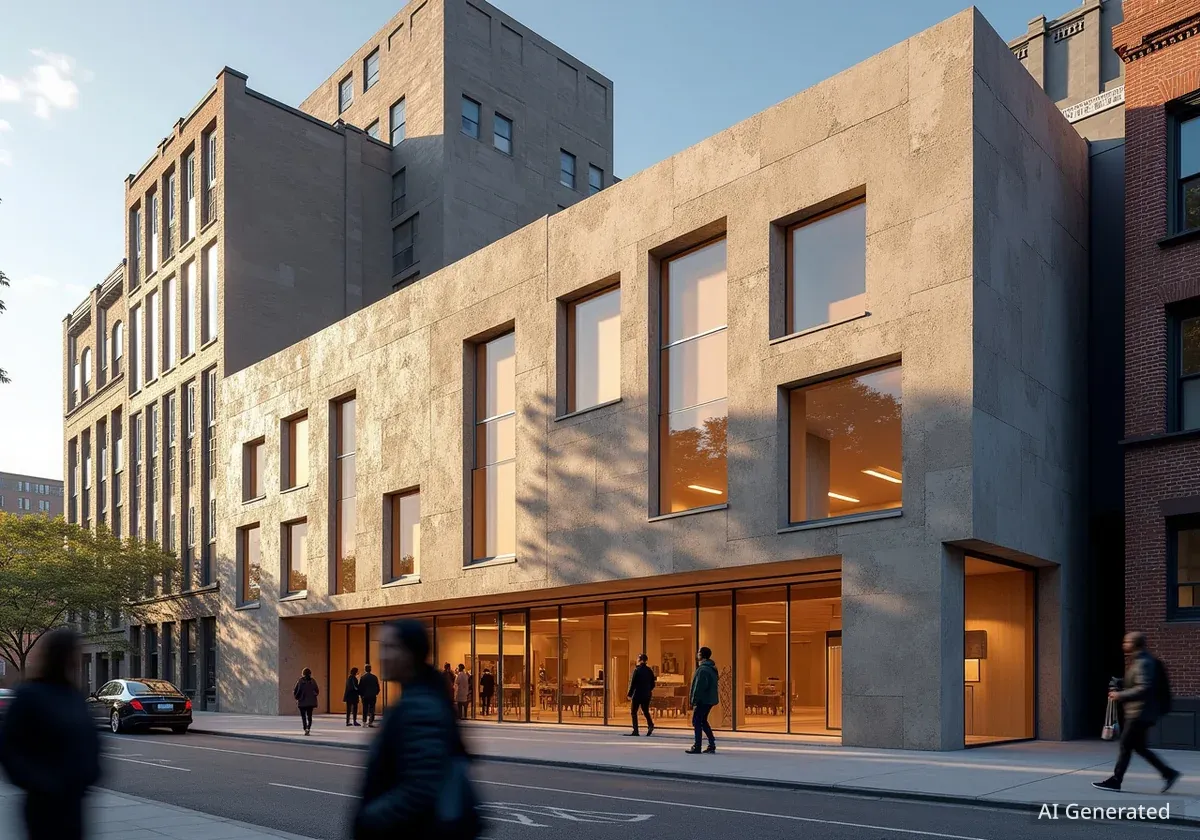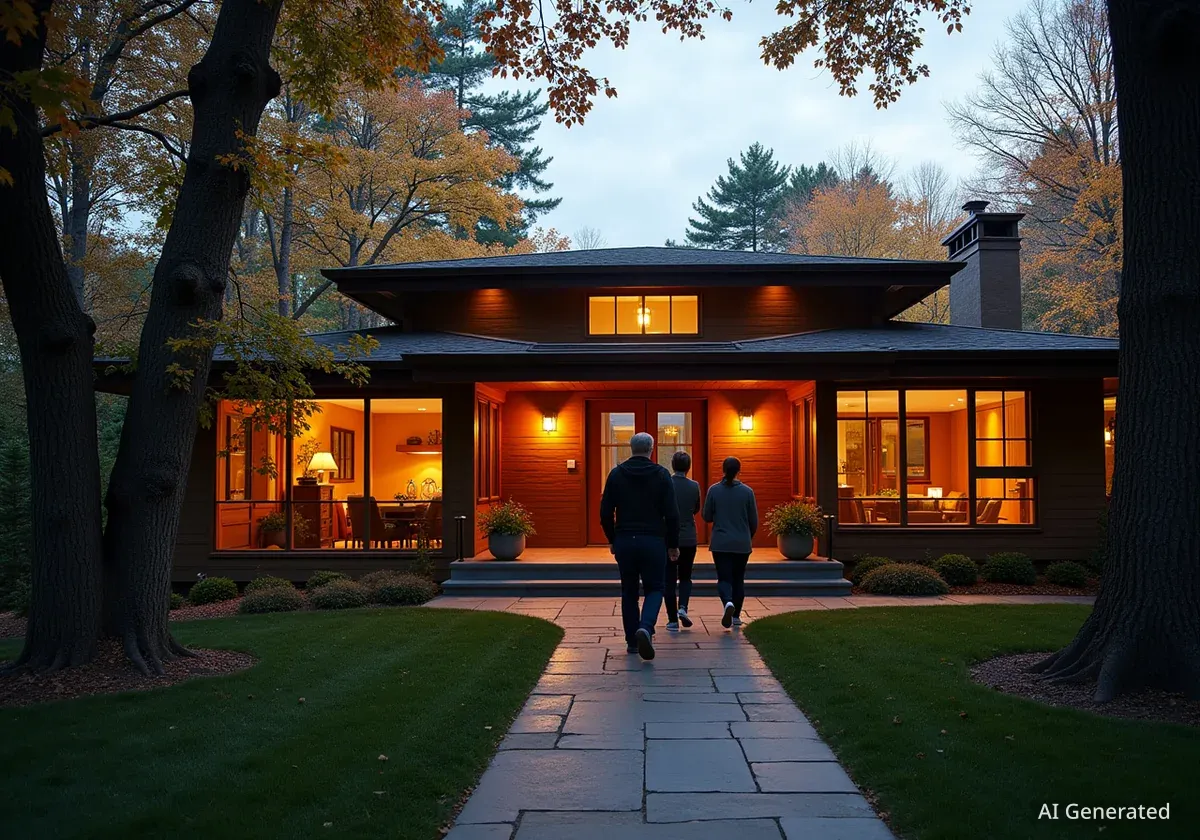The sprawling Los Angeles compound owned by the late filmmaker David Lynch is now on the market for $15 million. This 2.3-acre property in the Hollywood Hills features multiple structures, including a primary residence designed by Lloyd Wright and a remodeled Brutalist-style building that served as Lynch's creative studio and the base for his production company, Asymmetrical Productions.
Key Takeaways
- Filmmaker David Lynch's Los Angeles compound is listed for $15 million.
- The 2.3-acre property includes a Lloyd Wright-designed main house.
- A Brutalist-style building, remodeled by nonzero\architecture, served as Lynch's studio.
- Lynch acquired the properties over several decades, starting in 1987.
- The compound was a significant source of inspiration for his artistic work.
A Look Inside the Hollywood Hills Property
The compound, located on a sloping site on Senalda Road, reflects David Lynch’s unique architectural tastes and creative needs. Lynch, who passed away in January, spent many years curating this collection of buildings. Each structure played a role in his life and work, from his primary home to his dedicated workspaces.
The main house, purchased by Lynch in 1987 for $560,000, was designed by Lloyd Wright, son of the renowned architect Frank Lloyd Wright. This three-bedroom residence features distinctive pink concrete and chevron detailing. It was more than just a home for Lynch; it was a living inspiration.
In a 1997 interview, Lynch stated about the house, "It affects my whole life to live inside of it. Sometimes I see things, shapes or something that would go inside of it and that leads to furniture or film."
This quote highlights how deeply his surroundings influenced his artistic output, which included iconic movies and television shows.
Property Facts
- Total Acreage: 2.3 acres
- Listing Price: $15 million
- Primary Residence Architect: Lloyd Wright
- Year Primary Residence Acquired: 1987
- Purchase Price of Primary Residence: $560,000
The Evolution of Lynch's Creative Spaces
Over the years, Lynch expanded his property by acquiring adjacent buildings. One such acquisition was a two-bedroom Brutalist-style house. This structure became the official address for Asymmetrical Productions, Lynch’s production company. Its stark, robust design contrasted with the main residence.
Another Brutalist property, acquired in 1995 for $346,500, was transformed into Lynch’s personal studio. This building gained cinematic fame, appearing in his 1997 film Lost Highway before becoming his dedicated professional workspace. The transformation of this space was crucial for his artistic endeavors.
Studio Renovation by nonzero\architecture
Lynch commissioned studio bau:ton, now known as nonzero\architecture, to remodel the studio building in 1997. The design aimed to adapt the 1950s structure to meet the specific requirements of a filmmaker and artist. The renovation introduced angular forms that mirrored the building's exterior, creating a cohesive and inspiring interior.
The studio's design prioritized both technical functionality and artistic expression. While the Lloyd Wright-designed primary residence featured abundant wood and skylights, the studio adopted a more minimalist approach. It incorporated sharp, angled cuts and narrow windows, reflecting a distinct aesthetic.
Peter Grueneisen, founding principal at nonzero\architecture, recalled, "The design had to incorporate the strict parameters of the technical spaces with the zoning and structural difficulties of the hillside site. And we were very fortunate to have an exceptionally creative and knowledgeable client with a strong architectural vision."
This collaboration resulted in a space that was both practical and deeply personal to Lynch’s creative process.
Architectural Styles
Lloyd Wright: Known for integrating organic architecture with modernism, often using natural materials and creating harmonious indoor-outdoor spaces. His designs frequently featured unique geometric patterns.
Brutalism: An architectural style that emerged in the mid-20th century, characterized by massive, monolithic forms, exposed concrete, and a focus on functionality. It often presents a raw, unadorned aesthetic.
Dedicated Spaces for Creative Work
The remodeled studio included several specialized areas tailored for Lynch’s diverse talents. A key feature was the screening room, essential for a filmmaker. This room was designed with dark colors, acoustic equipment, and speakers lining the walls. It remains furnished with large chairs arranged in rows, alongside a table for recording equipment.
Beyond filmmaking, Lynch was also an accomplished painter and artist. The studio included a dedicated painting and drawing studio. Unlike the dimly lit screening room, this space was designed to maximize natural light. Skylights were strategically placed to allow ample sunlight to illuminate the interiors, creating an ideal environment for visual arts.
- Screening Room: Equipped with projection and recording gear, dark interiors for optimal viewing.
- Painting and Drawing Studio: Features skylights for natural illumination, suitable for visual arts.
- Acoustic Design: Specialized acoustic treatment in the screening room for sound quality.
The compound also includes a two-story guest house and another one-bedroom living space, offering additional accommodation. Eric Lloyd Wright, Lloyd Wright’s son, was commissioned to design a pool and poolhouse, further enhancing the property's amenities.
The entire compound reflects Lynch's commitment to his craft and his desire to create an environment that fostered his unique artistic vision. The blend of architectural styles and custom-designed spaces tells the story of a filmmaker who lived and worked within his own carefully constructed world.
Listing agent Marc Silver suggests that the ideal buyer might be a devoted fan of Lynch's work, or perhaps an institutional entity such as a foundation or museum. This indicates the property's cultural significance beyond its real estate value. The compound offers a rare opportunity to own a piece of cinematic history, embodying the creative spirit of one of cinema's most distinctive voices.




